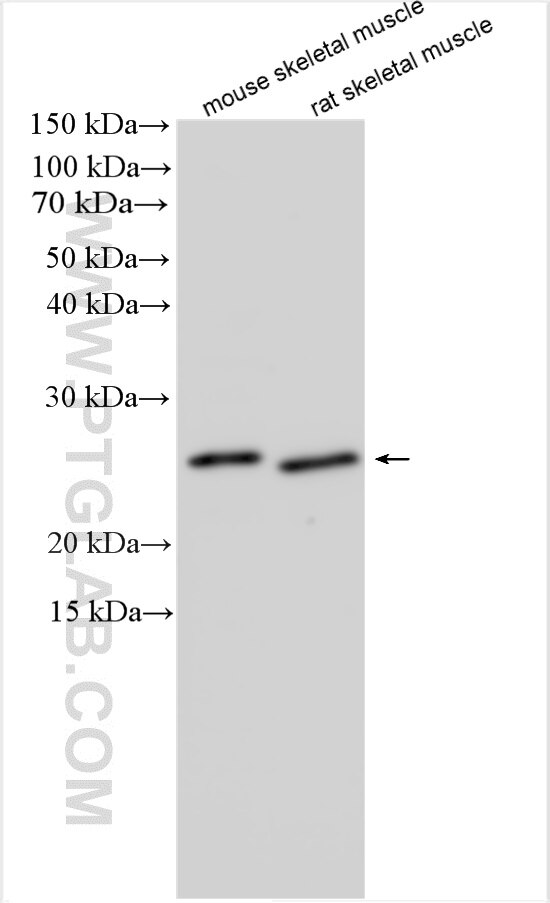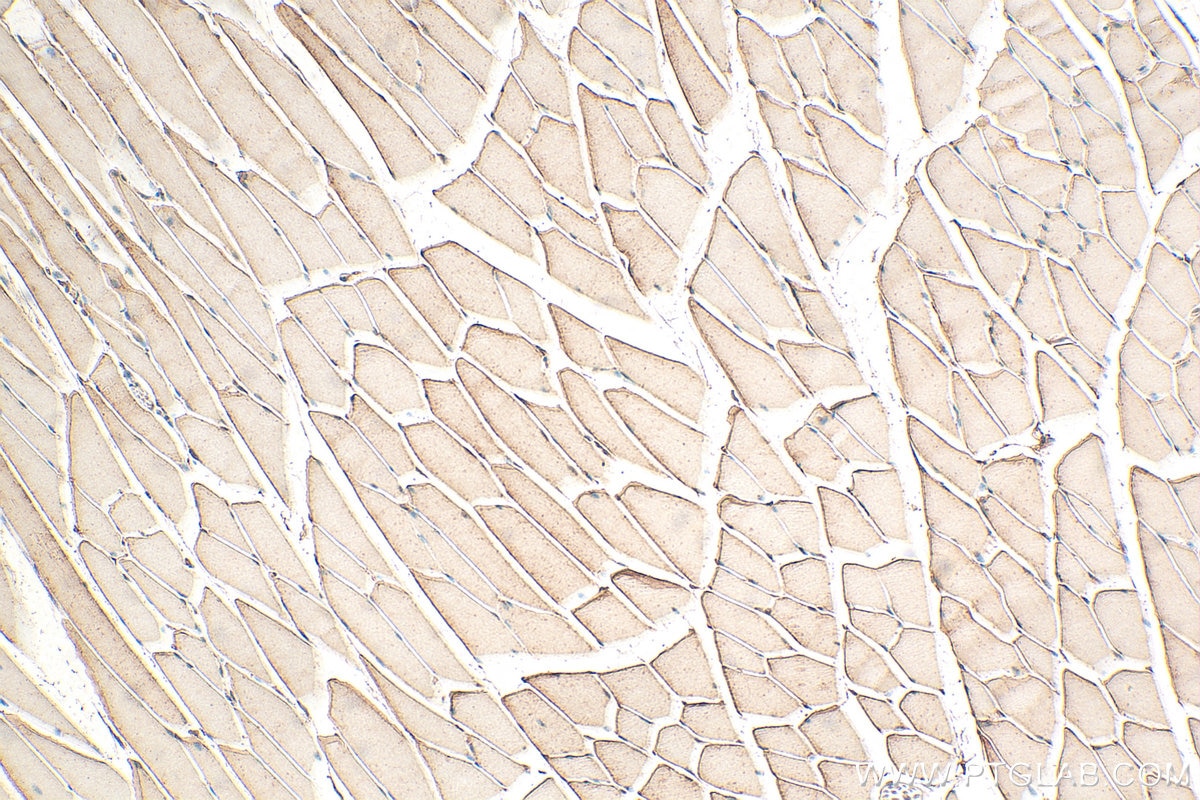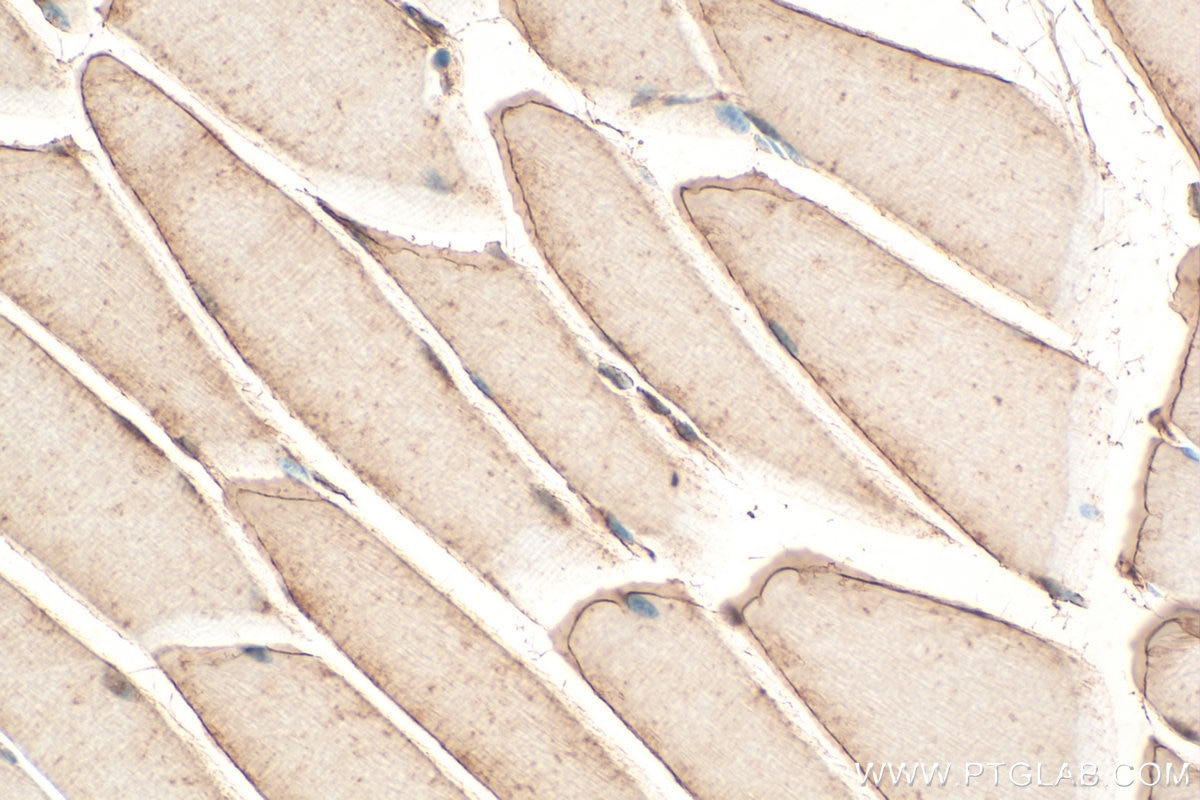Tested Applications
| Positive WB detected in | mouse skeletal muscle tissue, rat skeletal muscle tissue |
| Positive IHC detected in | mouse skeletal muscle tissue Note: suggested antigen retrieval with TE buffer pH 9.0; (*) Alternatively, antigen retrieval may be performed with citrate buffer pH 6.0 |
Recommended dilution
| Application | Dilution |
|---|---|
| Western Blot (WB) | WB : 1:500-1:2000 |
| Immunohistochemistry (IHC) | IHC : 1:50-1:500 |
| It is recommended that this reagent should be titrated in each testing system to obtain optimal results. | |
| Sample-dependent, Check data in validation data gallery. | |
Published Applications
| IHC | See 1 publications below |
Product Information
25259-1-AP targets DUPD1 / DUSP27 in WB, IHC, ELISA applications and shows reactivity with human, mouse, rat samples.
| Tested Reactivity | human, mouse, rat |
| Host / Isotype | Rabbit / IgG |
| Class | Polyclonal |
| Type | Antibody |
| Immunogen |
CatNo: Ag19658 Product name: Recombinant human DUPD1 protein Source: e coli.-derived, PET28a Tag: 6*His Domain: 1-150 aa of BC137322 Sequence: MTSGEVKTSLKNAYSSAKRLSPKMEEEGEEEDYCTPGAFELERLFWKGSPQYTHVNEVWPKLYIGDEATALDRYRLQKAGFTHVLNAAHGRWNVDTGPDYYRDMDIQYHGVEADDLPTFDLSVFFYPAAAFIDRALSDDHSKILVHCVMG Predict reactive species |
| Full Name | dual specificity phosphatase and pro isomerase domain containing 1 |
| Calculated Molecular Weight | 220 aa, 25 kDa |
| Observed Molecular Weight | 27 kDa |
| GenBank Accession Number | BC137322 |
| Gene Symbol | DUSP27 |
| Gene ID (NCBI) | 338599 |
| RRID | AB_3085779 |
| Conjugate | Unconjugated |
| Form | Liquid |
| Purification Method | Antigen affinity purification |
| UNIPROT ID | Q68J44 |
| Storage Buffer | PBS with 0.02% sodium azide and 50% glycerol, pH 7.3. |
| Storage Conditions | Store at -20°C. Stable for one year after shipment. Aliquoting is unnecessary for -20oC storage. 20ul sizes contain 0.1% BSA. |
Background Information
Dupd1also named as Dusp27, has been categorized as an atypical dual-specificity phosphatase (Dusp) capable of dephosphorylating both tyrosine and serine/threonine residues. It's involved in the modulation of intracellular signaling cascades. In skeletal muscle Dupd1 regulates systemic glucose homeostasis by activating AMPK, which is an energy sensor protein kinase. Dupd1 also affects MAP kinase signaling though modulation of the MAPK1/2 cascade in skeletal muscle promoting muscle cell differentiation, development and atrophy.
Protocols
| Product Specific Protocols | |
|---|---|
| IHC protocol for DUPD1 / DUSP27 antibody 25259-1-AP | Download protocol |
| WB protocol for DUPD1 / DUSP27 antibody 25259-1-AP | Download protocol |
| Standard Protocols | |
|---|---|
| Click here to view our Standard Protocols |








